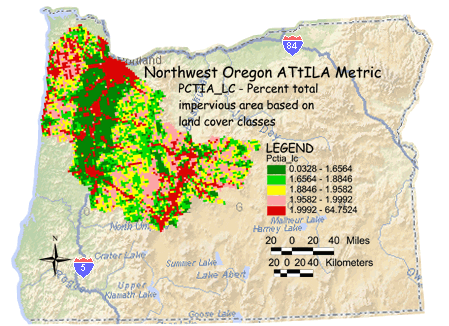|
|
PCTIA_LC - Percent total impervious area based on land cover classes The percent total impervious area is calculated by multiplying an imperviousness factor by the the proportion of certain land cover types known to be partially impervious. Default impervious factors are based on literature (Caraco et al. 1998), but may be changed by the user. Caraco, D., Claytor, R., Hinkel,P., Kwon, H.Y., Schueler, T., Swann, C., Vysotsky, S. and Zielinske, J. 1998. Rapid Watershed Planning Handbook. Center for Watershed Protection. Ellicott City, Maryland. |
Environmental Sciences: Northwest Oregon
- You are here: EPA Home
- Environmental Sciences
- Northwest Oregon
- Metric Maps/3 KM Grid
- Impervious Area/Land Cover
![[logo] US EPA](../gif/logo_epaseal.gif)
